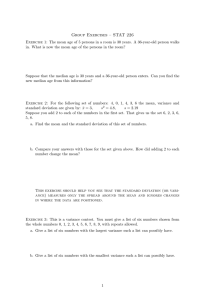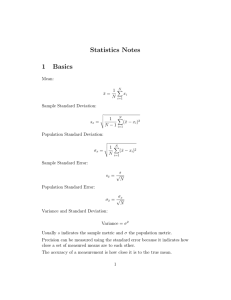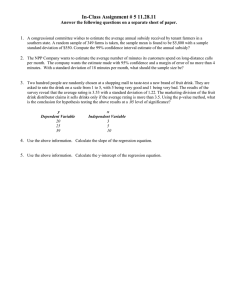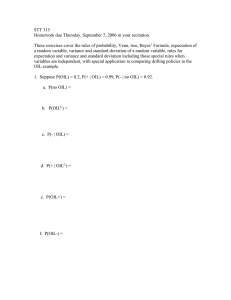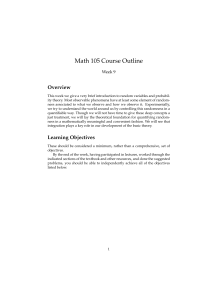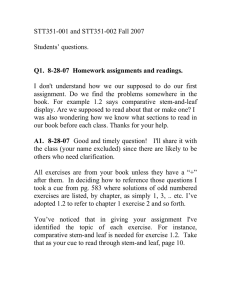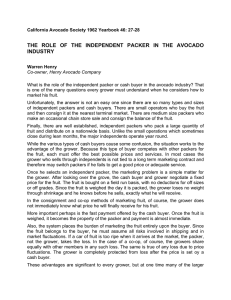Answers to Exercises 12.1
advertisement
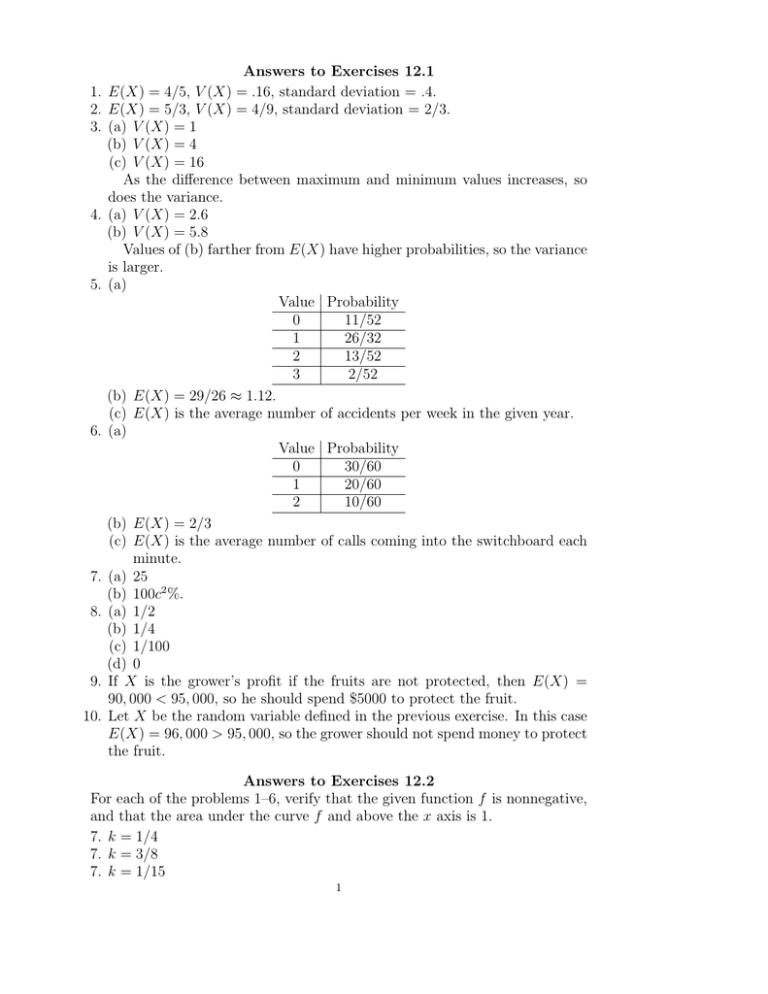
1. 2. 3. 4. 5. 6. 7. 8. 9. 10. Answers to Exercises 12.1 E(X) = 4/5, V (X) = .16, standard deviation = .4. E(X) = 5/3, V (X) = 4/9, standard deviation = 2/3. (a) V (X) = 1 (b) V (X) = 4 (c) V (X) = 16 As the difference between maximum and minimum values increases, so does the variance. (a) V (X) = 2.6 (b) V (X) = 5.8 Values of (b) farther from E(X) have higher probabilities, so the variance is larger. (a) Value Probability 0 11/52 1 26/32 2 13/52 3 2/52 (b) E(X) = 29/26 ≈ 1.12. (c) E(X) is the average number of accidents per week in the given year. (a) Value Probability 0 30/60 1 20/60 2 10/60 (b) E(X) = 2/3 (c) E(X) is the average number of calls coming into the switchboard each minute. (a) 25 (b) 100c2 %. (a) 1/2 (b) 1/4 (c) 1/100 (d) 0 If X is the grower’s profit if the fruits are not protected, then E(X) = 90, 000 < 95, 000, so he should spend $5000 to protect the fruit. Let X be the random variable defined in the previous exercise. In this case E(X) = 96, 000 > 95, 000, so the grower should not spend money to protect the fruit. Answers to Exercises 12.2 For each of the problems 1–6, verify that the given function f is nonnegative, and that the area under the curve f and above the x axis is 1. 7. k = 1/4 7. k = 3/8 7. k = 1/15 1 2 7. k = 1/2 7. k = 12 7. k = 2/9 15. 1/15 25. .24 35. 1/2 45. 5/9 55. 3/4 65. 22/25 75. (x − 1)−1/2 /4 85. 8x−3 /3 95. (x − 2)/5 105. F (x) = 3x/2 − x2 /4 − 5/4 115. (a) 19/63 (b) F (x) = (x3 − 1)/63 (c) F (3) − F (2) = 19/63. 125. (a) 5/27 (b) F (x) = 2x2 /9 − x3 /27 − 5/27 (c) F (4) − F (3) = 5/27 √ 31. 2 − 2 32. M = 10 ln(1.1)/ ln 2 33. b = 1.8 √ 34. a = 3 35. b = .6 36. b = 3/2 37. (b) F (x) = 1 − x−4 , (c) Pr(1 ≤ X ≤ 2) = 15/16. Pr(X ≥ 2) = 1/16. 38. (b) F (x) = 1 − (x + 1)−2 , (c) Pr(1 ≤ X ≤ 2) = 5/36. Pr(X ≥ 3) = 1/16.


